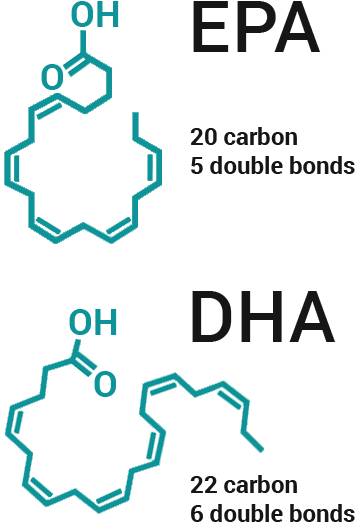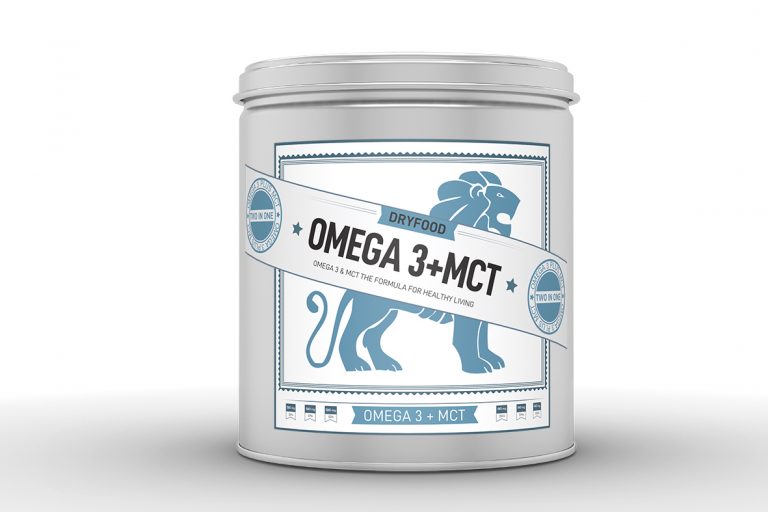DHA and EPA are both fish-derived omega-3 fatty acids, which play a significant role to maintain good health. Even though fish oil is the source for both of these, there are some particularities which separate one from the other.

The full form of DHA is ‘docosahexaenoic acid’. There are various benefits of DHA, including these:
- Supplement for premature babies and promoting mental development when used in baby formula
- It is one of the major components of the retina of human eyes, lack of which may cause visual problems
- It is used to treat various conditions like type-2 diabetes, ADHD, dementia and coronary artery diseases
- It can be combined with thyme oil, evening primrose oil, and vitamin E to treat a movement disorder called “dyspraxia” in children
- It reduces symptoms of metabolic syndromes, such as belly fat, insulin resistance, and high blood pressure
- DHA can significantly improve the quality and duration of sleep.
These are some of the many benefits of DHA.
Now let’s get to know what EPA is. The full form of EPA is ‘Eicosapentaenoic acid’. It has various benefits like DHA, though some of their qualities are similar, there are particular benefits of EPA. These include:
- Reducing high blood pressure in high-risk pregnancies ;
- Combined with RNA and arginine, it is given during post-surgery so that pain subsides and there is a quick recovery time and wound healing;
- From 3 types of omega-3 fatty acids, EPA seems to be most effective in fighting depression and schizophrenic tendency;
- It reduces menstrual pain and controls chronic inflammation ;
- EPA benefits the skin in many ways like reducing acne, controls the aging of the skin, manages oil production, etc.
Here we have seen individual benefits of DHA and EPA but being combined, these two fatty acids can show greater importance in many factors, such as prevention and improvement of patients having heart disease, cancer, asthma, lung diseases, etc. These also show effectiveness for migraines in teenagers, bipolar disease, skin infections, Bechet’s syndrome, etc.
We have come to know about a good number of individual and combined benefits of EPA and DHA. While two of these might seem similar and are extracted from the same source, we have to keep in mind that their functions are different and each has its own unique importance. Their physical and functional properties are different. DHA is found in seafood, then a portion of it is converted into EPA after being consumed. EPA is more beneficial in blood clotting and heart disease, while DHA plays a good role in the quality of vision, pregnancy and mental development of infants. EPA plays a better role in burning excess fat, while DHA decreases blood triglycerides and increases HDL. EPA seems to be more useful in mental drawbacks like depression, ADHD, etc. On the other hand, DHA is necessary for a functional nervous system. So, these are some clear differences that show that EPA and DHA have their own functions and benefits despite being similar.
Omega3-MCT has the highest levels of EPA and DHA combined with valuable MCT oil.
Though there is no fixed dosage for omega-3 acids, the recommended dose is 5 grams of fish oil, which could contain up to 500 mg of EPA and 300 mg of DHA for healthy persons. However, the dosage is fixed for specific medical conditions. Studies show that 850-1000 mg of combined EPA and DHA should be taken for heart disease patients. Fore mental disorders like depression or anxiety, a higher amount of EPA is recommended i.e. For depression, 1 g EPA twice daily; For BPD, 1 g EPA daily up to 8 weeks. Again, DHA is more necessary for pregnant women. Experts recommend adding 200 mg of DHA with regular dosage during pregnancy. While seeing all the good effects and dosage, we also have to understand that too much can be harmful, the FDA research shows that 3000 mg shouldn’t be exceeded.
We already know that EPA and DHA are found in high amounts in fish oil and seafood. Some of the best sources are the flesh of mackerel, tuna, salmon, whale blubber, bluefish, sardines, lake trout, etc. These fish are rich in omega-3 and should definitely be added to our daily diet.
The last thing we should all know about is the side effects. As the saying goes, there are two sides to every coin. So as we get so many benefits from EPA and DHA, there are some side effects too. Such as, too much intake can thin the blood and cause excessive bleeding. These might lower blood pressure and create risk for people already having low blood pressure. Moreover, DHA and EPA might affect breathing for aspirin-sensitive people. There have also been cases that sugar level increased for people with type-2 diabetes because of DHA.
So, knowing all the benefits and side effects, we should make the best use of this omega-3 MCT. We should take it in the recommended amount and avoid any risks. Our health condition depends on ourselves, so we should remain careful about taking supplements. For general use, 200-500 mg of daily DHA and EPA is enough. For triggering the DLO effect, you should take more. Overall, DHA and EPA are very beneficial for our health and keep us in good condition.
